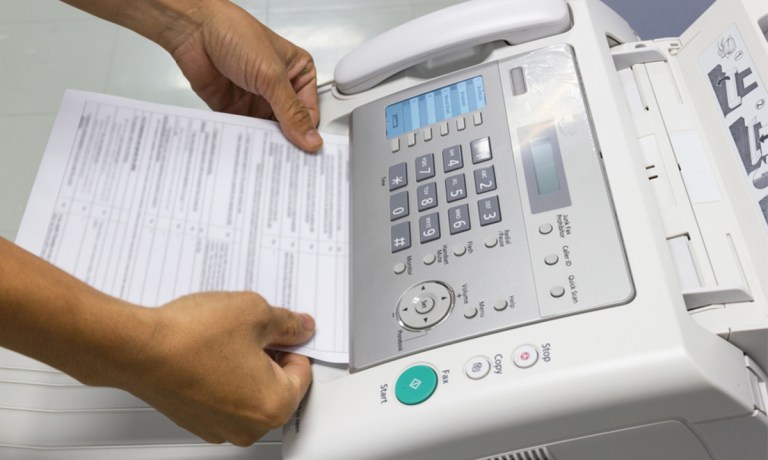
For every fragmented ecosystem, there’s a digital innovation being built and scaled to streamline it.
The global syndicated loan market, a $7 trillion-plus industry where loans are extended by multiple lenders to a single borrower, is no different. These loans, often ranging from millions to billions of dollars, are too large for any one lender to handle alone. Instead, various financial institutions — banks, funds and other entities — join to pool their resources and share the risk.
“Faxes and PDFs are still flying around,” Versana Founding CEO Cynthia Sachs told PYMNTS. “They are still a significant part of how information moves in this market. And firms need to ultimately processes them and get them into systems.”
Data on loan performance, cash flows and interest payments is — in many cases — still being shared via manual processes, slowing down the system and leaving room for errors, she said.
Since the turn of the 21st century, what began as a private, niche space grew into a massive network of corporate loans, involving thousands of lenders, funds and financial institutions. But with its growth came operational challenges, as, despite this rapid growth, the infrastructure supporting the market remained largely outdated, with major, global players relying on antiquated processes to manage crucial data flows.
“Everyone has to maintain their own books and records, which is a complicated, inefficient process when you’re dealing with millions of dollars and multiple players,” Sachs said. “You have a whole bunch of different things going on here, and nobody has managed so that everyone has good data to put into the right system to ultimately make the best decision off of.”
Recognizing these inefficiencies, major financial institutions have started to embrace digital solutions designed to modernize and streamline in real time the way loan data is processed and shared within the fragmented syndicated loan and private credit ecosystem.
While big banks like J.P. Morgan, Bank of America (BofA), Barclays and others began to realize that the syndicated loan market needed to be digitized and modernized, regulators, including the Securities and Exchange Commission (SEC) also started to raise concerns about the lack of transparency and the potential risks posed by the current system.
“The SEC started to look at this and said, ‘This isn’t healthy,’” Sachs explained. “They didn’t want to step in, but they made it clear that something had to change.”
Against this backdrop, Versana, a centralized, real-time data platform that offers “golden source” data for the market was formed, she said. The platform aims to address the inefficiencies plaguing the syndicated loan market and provide a centralized, real-time data hub that can bring clarity, speed and scalability to all players involved — whether they are originating loans, servicing them or investing in them.
“J.P. Morgan, BofA, Citi and Credit Suisse were the initial investors,” Sachs said. “Now, we’ve grown that to nine investors, including major institutions like Barclays, Morgan Stanley, Deutsche Bank, Wells Fargo and U.S. Bank.”
These financial institutions are not just investors — they are also contributors to the platform’s data. By committing their data digitally, in real time, from their source systems, they help create a unified, accurate dataset that the entire market can rely on.
“For fund managers, having the right data is critical,” said Sachs, noting that Versana now has data on $2.7 trillion-worth of corporate loans.
“If you’re managing a portfolio of corporate loans, you need accurate, timely information to make decisions and manage your books,” she added.
One of the key benefits of any digital platform is its scalability via network effects. As Sachs noted about Versana, the more institutions that adopt the platform, the more powerful it becomes, offering comprehensive coverage of loan portfolios.
This kind of collaboration is particularly important in the syndicated loan market, where no single institution should realistically take on the risk of a large corporate loan alone. By enabling seamless data sharing between lenders, Versana helps ensure that everyone involved in a deal has the information they need to manage their positions effectively.
“Our goal is to bring the entire market together,” Sachs explained. “When you have the best data, in real time, you can scale your business and make better decisions.”
To help scale its solution, Versana earlier this month raised $26 million and added Barclays, the company’s first British bank, to its platform.
Still, Sachs acknowledged that while some institutions are eager to adopt new technologies, others are more hesitant.
“Some of our clients are early adopters,” she said. “They see the value of the platform and are ready to integrate it into their accounting software right away. Others are more cautious and want to wait until there’s more coverage before they fully commit.”
Sachs said this is just the beginning.
“Once we have all this great data centralized in one place, we can build new products on top of it,” she said. “Versana is not just about modernizing the market. We want to continue to innovate and offer new solutions that help the market grow and scale. Everyone wins when the market has the best data and the technology to use it.”